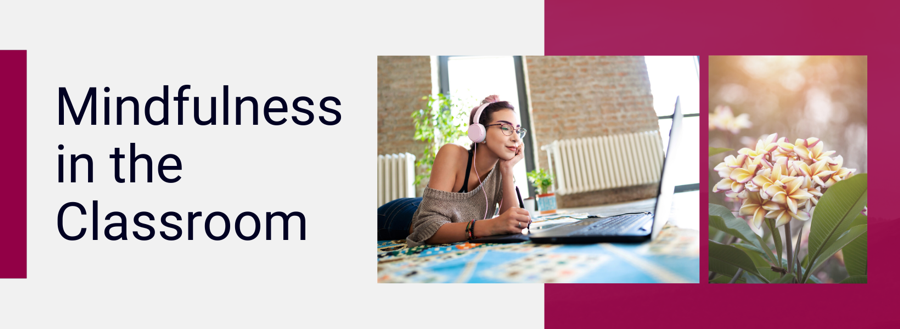
Mindfulness is a practice of non-judgemental awareness of one’s thoughts, emotions, sensations and experience of the present moment.
There is a growing body of research that confirms mindfulness is an evidence-based intervention for college-age students. The Mental Wellness Services program wants to make it easier for teachers to implement meaningful mindfulness practices into their classrooms so that more students can experience the benefits of mindfulness.
Research shows that mindfulness may help trauma-exposed students with:
- managing emotions
- Improve relational functioning
- Increase compassion and empathy for others and themselves (Kuhl, M., & Boyraz, G. 2017)
Other general benefits of mindfulness include:
- Reducing rumination
- Reducing stress
- Boosting working memory
- Improving focus
- Reducing emotional reactivity
- Improving cognitive flexibility
- Improving relationship satisfaction (Davis & Hayes, 2012)
Download any of the Powerpoints below so that you can start adding a mindfulness exercise in your classroom. We recommend starting the class with a mindfulness exercise or incorporating it midway through lecture to help with sustained focus, engagement, and mood regulation.
Be on the lookout for students that consistently disengage from class after participating in a mindfulness activity, as they may be experiencing overwhelming thoughts or emotions that indicate they would benefit from your referral to see a MWS clinician.
1-3 Minutes
3-5 Minutes
5-10 Minutes
10+ Minutes
References
Davis, D., & Hayes, J. (2012). What are the benefits of mindfulness. Retrieved 2020, from https://www.apa.org/monitor/2012/07-08/ce-corner
Kuhl, M., & Boyraz, G. (2017). Mindfulness, general trust, and social support among trauma-exposed college students. Journal of Loss and Trauma, 22(2), 150–162. https://doi.org/10.1080/15325024.2016.1212610


















